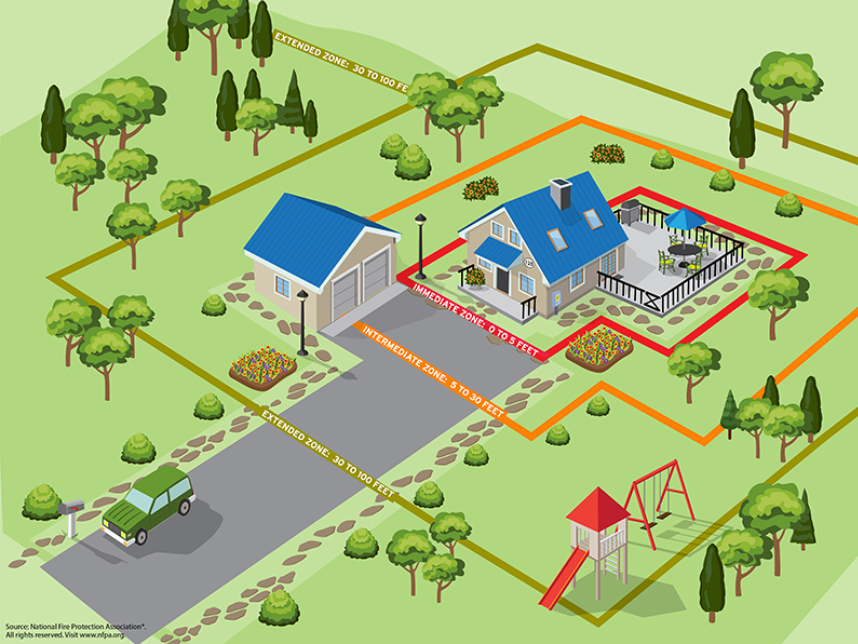Wildfire Defense for Construction Professionals: Building Resilient Homes

Wildfires are becoming an increasing threat to communities, particularly in fire-prone regions. As construction professionals, implementing wildfire defense strategies during the building process can significantly enhance the resilience of homes and commercial structures. By integrating fire-resistant materials, smart design techniques, and proper landscaping, builders can help mitigate wildfire risks and protect lives and properties.
Fire-Resistant Building Materials
One of the most effective ways to protect a home from wildfires is to use fire-resistant materials. Consider the following options:
- Exterior Walls: Use non-combustible materials such as stucco, fiber-cement siding, or masonry.
- Roofing: Opt for Class A fire-rated roofing materials like metal, slate, concrete tiles, or asphalt shingles with a fire-resistant underlayment.
- Windows & Doors: Double-pane tempered glass and fire-rated doors provide additional protection against radiant heat and embers.
- Decking & Fencing: Use non-combustible materials such as composite, metal, or fire-resistant treated wood.
Defensible Space & Landscaping
Creating a defensible space around a structure is crucial in slowing or stopping the spread of fire. Key principles include:
- Zone 1 (0-5 feet): Use non-flammable ground cover, keep vegetation sparse, and remove combustible materials like wood piles.
- Zone 2 (5-30 feet): Space trees and shrubs to reduce fire spread and prune low branches.
- Zone 3 (30-100 feet): Maintain healthy, well-irrigated vegetation and remove dead or dying plants.
Smart Architectural Design
Strategic home design plays a critical role in wildfire defense. Consider the following design elements:
- Ember-Resistant Vents: Install mesh screens with a fine gauge to prevent embers from entering attics and crawl spaces.
- Gutter Guards: Use non-combustible gutter covers to prevent the accumulation of dry leaves and debris.
- Sprinkler Systems: Install external sprinklers or water delivery systems for added fire suppression.
Firewise Construction Practices
Adopting best practices during construction can improve a building’s wildfire resilience:
- Ensure proper clearance between the structure and vegetation.
- Use ignition-resistant sealants and coatings on wood surfaces.
- Construct with enclosed eaves to minimize ember entry points.
Compliance with Wildfire Building Codes
Many fire-prone regions have specific building codes aimed at increasing fire resistance. Construction professionals should stay informed about:
- California’s Wildland-Urban Interface (WUI) Code
- National Fire Protection Association (NFPA) Standards
- Local zoning regulations and fire department guidelines
Building with wildfire defense in mind is no longer optional—it is a necessity. By incorporating fire-resistant materials, defensible space planning, and smart design, construction professionals can create safer, more resilient homes that stand a better chance against wildfires.
Prioritizing these strategies not only enhances property protection but also contributes to the safety of entire communities.
Stay ahead of wildfire threats. Build smart, build safe.

